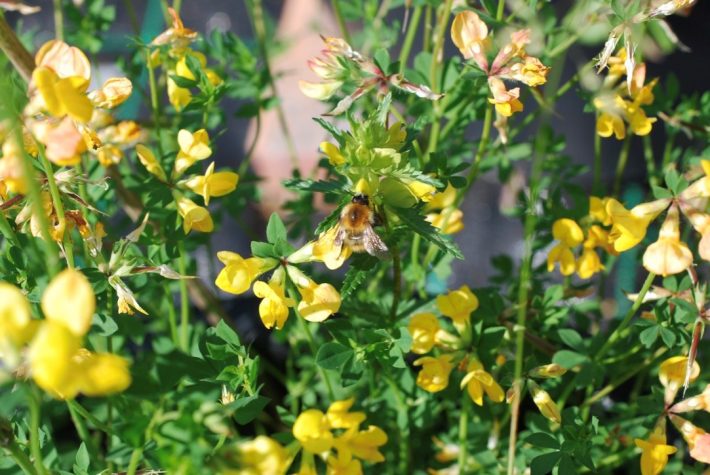Greater species diversity boosts meadows’ resistance to parasitic invaders
Manchester Metropolitan University press release
Grasslands enjoying a wider biodiversity have more resilience against parasitic plants, university researchers have found, in a Journal of Ecology study that could have important ramifications for active land management and conservation.

The Manchester Metropolitan University-led team explored how the survival and spread of the common parasite yellow rattle (Rhinanthus minor) was affected by the species diversity of its host plants – a controlled mix of grasses, legumes and forbs reflecting those typically found in Britain’s hay meadows – and by genetic diversity among the yellow rattle plants themselves.
The study, co-authored by lead academic Dr Jennifer Rowntree, Senior Lecturer in Ecological Genetics and Applied Conservation at Manchester Metropolitan University, and PhD student Hayley Craig of the University of Manchester, was published online today (Tuesday August 21) by the Journal of Ecology.
Its findings may influence how landowners, conservationists and farmers manage their grasslands to promote parasitic plants, which leads to greater biodiversity in the long term, or reduce or eliminate them, according to land management needs.
Dr Rowntree said: “We know that there is currently a ‘biodiversity crisis’ and large numbers of species are in decline, but it is often hard to demonstrate why this matters, and what we mean by ‘biodiversity’ anyway.
“‘Biodiversity’ is partly the number and abundance of different plants, animals and other creatures in the world around us – known as species diversity – but it is also the differences among individuals of the same species and includes characteristics that can be passed from parents to offspring, known as genetic diversity.
“Hay meadows in the UK can be high in biodiversity and are places where lots of plant species interact with each other.
“Yellow rattle is a parasitic plant that can be found in UK hay meadows. It has roots that grow into the roots of other plants, which it then feeds from like a vampire.
“Infection by the parasite usually reduces the growth and fertility of its host plants.
“With this research, we tested whether artificial hay meadows with lots of plant species were better able to resist infection by the parasitic plant yellow rattle.
“We also looked to see if increasing levels of genetic diversity in the parasite made it better able to become established.
“We found that in meadows with many different plant species, the parasite had more difficulty becoming established than in meadows with fewer plant species.
“However, when the parasites had high levels of genetic diversity, the density of infection increased and the parasites became established more easily, especially in the longer term.
“Therefore, species diversity protected the host plants from infection by the parasite, but genetic diversity helped the parasite to become established.
“We showed that in hay meadows biodiversity was important for regulating levels of infection by a parasite.”
When established in meadows, parasitic plants such as yellow rattle can help create gaps in the vegetation that allow other plants to move in, so can actually boost biodiversity in grasslands in the long term.
Dr Rowntree said the study findings suggested if someone wanted to actively introduce a parasite the best way of ensuring it successfully takes hold was to sow seeds from multiple populations, ensuring greater genetic diversity, rather than from a single source.
But the findings also suggest if the landowner wishes to improve the resistance of host plants to such parasites then a greater species diversity of host plants would have a better chance at fending off an invasion.
Dr Rowntree said the findings of the research could apply to other types of parasitic plants aside from yellow rattle, which is common across the UK and northern Europe.
Dr Rowntree was funded for the study by the UK Natural Environment Research Council.
Read the full article (freely available for a limited time):
Rowntree JK, Craig H. The contrasting roles of host species diversity and parasite population genetic diversity in the infection dynamics of a keystone parasitic plant. J Ecol. 2018;00:1–11. DOI: 10.1111/1365-2745.13050
Media contact:
Ian Proctor, Manchester Metropolitan University, Tel: +44 161 247 2026, Email: i.proctor@mmu.ac.uk
Like what we stand for?
Support our mission and help develop the next generation of ecologists by donating to the British Ecological Society.